10/06-10/14
1434.91 km from Canterbury
I met Chad at the train station in Milan that night. It was so nice to see him as we had only been able to Skype once since I had left Bend in July and had subsisted on WhatsApp for the remainder of our correspondence. We stopped at a very casual pizza place that was highly recommended on TripAdvisor. It ended up being an incredible meal, and the fantastic pizza was precisely what Chad needed to get acquainted with Italy!
We spent that night in the city and walked around for a few hours downtown the next morning. We got our first cappuccino and croissants together, and the barista gave them to us for free! He even drew adorable faces in the foam!
 |
| Now that's latte art! |
 |
| I asked Chad to bring me some cupcakes from my favorite cupcake store in Bend! :D |
The first day of walking with Chad we left Mortara and had a pretty easy route through the rice fields of Northern Italy. The weather was perfect in the high 60s, and the sun was shining. We soon ran into the same problem I had been having since entering the rice fields, which was the aggressive population of mosquitoes. All the stale pools of water were cesspits full of breeding mosquitoes, and we were very excited to get out of those fields!
 |
| Chad's first Via Francigena sign! |
For this pilgrimage, Chad was borrowing my dad's old backpack from the 80s! While it is still a functional tool, it has no ventilation so Chad was soon to find out that a very sweaty back would characterize his trip through Italy!!
 |
| This was during a 60 degree day!! |
We stopped for a lunch break in the small town of Tromello and relaxed by the fountain in the central piazza. A sweet little old man biked up on an awesome Italian flag painted bike and asked us if we'd like stamps in our passports. He darted off with them and then returned ten minutes later with mini testimoniums for us!!
That night we made it to Gropello Cairoli and stayed in their parish accommodation. Chad seemed to have enjoyed his first day on the trail, but he was pretty tired. The walk that day had been around 30 kilometers, so it was definitely a rough first day!
 |
| Church in Gropello Cairoli |
 |
| Breakfast of croissants and cappuccini! |
The next morning we continued our journey through the rice paddy wastelands...
By the afternoon we were walking along the Ticino River which connects to the massive Po River that spans Northern Italy. We ended up following the course of the river into the city of Pavia. The day of our arrival we were walking through the trees along the Ticino when we suddenly came upon a restaurant in a clearing on the river. There was nothing else around except for a large patio and small building. There were lots of locals relaxing in the shade playing cards, and Chad and I decided to stop and eat our lunch there. We ended up splitting a sandwich and a plate of fries while we sat and enjoyed the view around us. It was one of those beautiful and unique experiences that you know you'll never be able to replicate exactly the scene or the feeling!
 |
| Ticino River from the restaurant |
We made it to Pavia two hours later and
stayed at a hostel in Borgo Ticino.
 |
| Flooding records over the years! This was half a kilometer from the river! |
Pavia is a beautiful city filled with medieval towers sitting on the northern side of the Ticino. It is connected to the smaller Borgo Ticino on the southern side of the river by a covered bridge. Founded over 2000 years ago, Pavia still retains the grid structure of its Roman urban plan. From 572-774 Pavia was the capital of the Lombard kingdom and thus hosts a plethora of Lombard art and architecture. It was here that Holy Roman Emperors were once crowned, Frederick I Barbarossa being the most famous among them!
The city still retains a medieval aura in its the streets with a plethora of tall brick medieval towers, small little alleyways, and streets leading onto medieval piazzas.
 |
| Italian kitty |
Pavia is also famous for being the home to one of the oldest universities in Europe. The university, built in 1361, is still nestled deep within the medieval center of the town and home to a large group of students.
The covered bridge was amazing. It was rebuilt after WWII when the previous medieval bridge had been destroyed by bombing. You could still see the remains of the Roman bridge next to the current one.
 |
| Roman bridge remains in the river to the left |
 |
| Part of Borgo Ticino |
We entered the northern side of the city, and our first stop was a Gelateria to enjoy some frozen treats and get our stamp!
 |
| Chad's first Italian gelato! |
We then cruised away from the river and towards the university. The medieval towers were incredible! You could see them all over town, and they dominated several piazzas.
As we neared the university, we entered the Piazza Leonardo da Vinci and passed by the archeological site of the Crypt of Saint Eusebio. This covered site showed the remains of the Lombard church founded in the middle of the 7th century. All that remains to be seen are the brick and terra-cotta tombs in the crypt.
Towering over the crypt in the piazza are three large medieval brick towers! According to my tourist sources, all of these medieval towers give the city of Pavia the nickname "città delle cento torri."
The university was busy and full of students! The district was a beautiful area just next to Strada Nuova. We walked into a Renaissance courtyard with yellow walls and the feel of lively university life permeated through the hallways. There were several courtyards attached to this one that led onto the main street.
After exiting onto Strada Nuova, we stopped for some very cheap and delicious pizza. The pizza was so good and reasonably priced that we would return for lunch the following day as well! The restaurant was right next to the University and was filled with young people, so I assume it catered to the funds of poor academics.
We ducked into a large piazza on the opposite side of the street to find ourselves entering the medieval Piazza della Vittoria. This square had been opened up in 1374! It was ringed with old and beautiful buildings, most moonlighting as cafes. Many of these still retain their medieval architecture, mounted with plaques stating the age of the structure.
 |
| Pizza della Vittoria |
 |
| Santa Maria Gualtieri, 11-12th century |
On one side of the piazza sits the Broletto. This building, characterized by a covered portico, dates back to the 12th century and was used as a town hall. In more modern times it has been used as a seat of the government, at one point becoming the seat of the National Fascist Party of Italy!
 |
| The Broletto |
 |
| Lion paw fresco on the side of the building |
Exiting the piazza next to the Broletto we reached the Piazza del Duomo.
 |
| Duomo of Pavia |
The Duomo of Pavia was built in 1488 on the destroyed foundations of two smaller cathedrals which sat side by side along the piazza, St Maria del Popolo and St Stephano. The Duomo wasn't finished until the 1930s! Gives you a new appreciation for the Basilica di Sant'Andrea in Vercelli! Up until it collapsed in 1989, there was a large tower standing proudly next to the Duomo.
 |
| You can still see some of the remains of the tower and earlier cathedrals |
The central dome over the Duomo is 97 meters high and the third largest in Italy! It can be seen from all over the countryside around the city. The inside of the Duomo is a beautiful example of Renaissance style architecture, and even Leonardo da Vinci and Bramante were involved with its design!
Chad and I found that the strictures of Italian Sundays would define our visit to Pavia and so there was much dancing and backtracking around the city trying to duck into churches while they were not being used for mass!
Leaving the Duomo, we walked north along the Strada Nuova. Strada Nuova is the main street in Pavia, extending from Borgo Ticino on the south side of the river, over the bridge and straight through the medieval center of town to the Visconti Castle at the north end of the city.
 |
| Strada Nuova |
The Visconti Castle houses the Civic museums of art and archaeology as well as the remains from the two destroyed cathedrals. Galeazzo II Visconti built the castle in 1360, and the interior was painted in beautiful frescoes of landscapes, animals, scenes from myth as well as the coat of arms of the Visconti family: the Visconti Serpent! This symbol could have two different meanings depending on who is explaining it: that of a serpent swallowing a Saracen... or a serpent giving birth to a child. Not very much remains of the once extensive frescoes, but in a few rooms you can still see the glory they must have been once!
 |
| Visconti Castle |
The castle is built in a Gothic-Lombard square plan with arcades running along the length of the walls, framing the courtyard within. The North Wing had initially been the residential section facing the large park behind the castle, Parco Visconteo, but now sits in ruins.
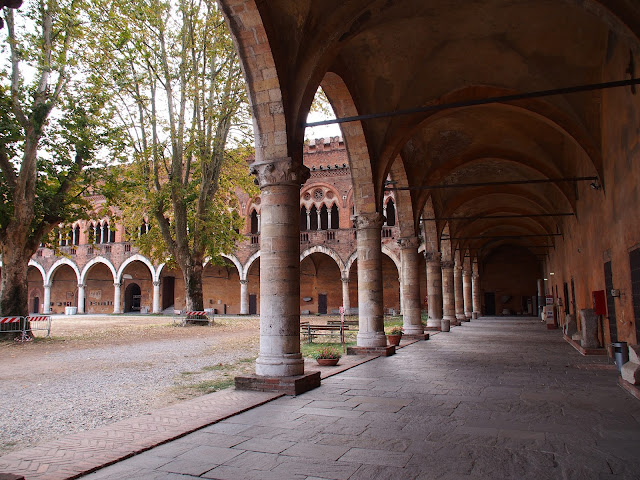 |
| The inner courtyard and portico |
The Visconti family was a wealthy and important Italian family during the Middle Ages and built castles throughout Northern Italy. Francesco Petrarch spent some time in Pavia after Gian Galezzo Visconti invited him to take charge of the Visconti library.
According to Petrarch, "The location of the city is as wonderful as any ever seen, which, stretching down the slope of a hill, extends its many towers towards the sky. With such a perspective all around, so clear and vast, I do not believe another city on the plain could have one more grand and beautiful."
 |
| The Visconti Serpent |
 |
| Beautiful frescoes |
The museum was very interesting. There were many Roman ruins as well as the remains of the two twin Romanesque cathedrals, St Mary del Popolo and St Stefano.
The two Romanesque cathedrals of Santo Stefano and Santa Maria del Popolo stood side by side in medieval Pavia until a motion to destroy the smaller cathedrals and create a large and grand single Cathedral was put forth and begun in the 15th century. The two smaller cathedrals had been founded between the 6th and 7th centuries and ended up being combined into a single architectural complex with a nave of eight aisles before their destruction!!
 |
| A view of the cathedrals and bell tower |
During the destruction of Santo Stefano and Santa Maria del Popolo, pieces of their architecture were saved and then stored in the Civic museums of Pavia. Especially grand were three of the Romanesque portals from the cathedrals!
Along with these portals were rooms filled with capitals and sculptural friezes from the buildings, all in their sturdy Romanesque glory!
During this section of our visit, a tiny ancient woman, painted in blues and pinks, attached herself to us. She took it upon herself to give us a personal and in-depth tour of the museum artifacts. Chad quickly distanced himself, but I was unfortunately stuck nodding and barely understanding her rapid-fire Italian. She followed us through all of the downstairs rooms, and only when we reached the stairwell thirty minutes later did she disappear in a smoke of sparkly blue eyeshadow to return to her seat at the beginning of the exhibition.
The room of mosaics was incredible! These mosaics had graced the floors of the two cathedrals and are reassembled almost to their former glory. I have always had a fondness for mosaics. They are so precise and detailed!
 |
| This mosaic reminded me of the Bayeux Tapestry! |
 |
| The seasons of the year |
The entire residential section of the castle had been destroyed, all that remained was a small ring of brick ruins and a dozen cannonballs.
Upstairs, after we had finally lost our tour guide, we walked through many rooms of Medieval, Renaissance and Early-Modern art.
 |
| A cherubic face |
 |
| Chad and I thought this Madonna was a little creepy... |
There was also a large wooden model of the Duomo that had been built during its construction!
After exiting the castle, we visited the Basilica di San Pietro in Ciel D'Oro. This church is the burial site of Saint Augustine and Boethius!
The interior was very dark, but the Romanesque capitals and frescoes were stunning. This church was so well known in medieval times that is was mentioned by Dante Alighieri in the tenth canto of his Divine Comedy! "The body whence it was chased forth, lithe down below in Cieldauro and itself from martyrdom, and exile came unto this peace."
San Pietro in Ciel d'Oro also makes an appearance in Boccaccio's Decameron in the tale from the tenth day!
The pediment holding the relics of St Augustine was built in 1362 and decorated with 150 statues and reliefs. It was a magnificent block of creamy white sculptured marble.
Continuing on our tour of the churches we backtracked towards the Duomo. Just north of the Duomo is the church of Santa Maria del Carmine. This beautiful church is one of the best-known examples of Gothic Visconti-era brick architecture in Northern Italy and is the second largest church in Pavia.
Inside the church, mass was being sung, creating the most calming and transcendent experience. There were gorgeous frescoes as well, many of which were in ruins but still beautiful nonetheless.
Further south on the slopes leading to the river is the church of San Teodoro. This was my favorite of all the churches in Pavia!
This church was dedicated to St Theodore of Pavia, a medieval bishop, and traditionally served fishermen! It was built in 1117 and displays some gorgeous late Romanesque architecture.
The highlight of the small church were the two birds-eye-view frescoes of Pavia from 1525. These frescoes were incredible! The detailing of the different streets and roofs along with the people in the streets! I love old maps, and these were as fantastic as you can get! They were painted by Bernardino Lanzani.

There were several other frescoes in the church, all of them gorgeously rendered.
Another of my favorites was this cycle of the life and death of Saint Theodore. This expansive fresco covered an entire wall with scenes of knights, and buildings and war and saintly virtues!
On our way out of the town the next morning we stopped at the Basilica di San Michele Maggiore. This was the perfect last stop as it was filled with gorgeous art and history. San Michele is considered an outstanding example of Lombard-Romanesque church architecture and was built in 1004 on the site of a pre-existing Lombard church.
The entire front facade had been sculpted out of very soft sandstone. You could see that the facade had once boasted a plethora of decorative sculpture, but alas, the passing of time had worn down most of the sculpture to near oblivion!
 |
| Adam and Eve and the snake |
 |
| One portal that had been restored |
Santa Maria Maggiore was the church in which the crowning of the Holy Roman Emperors once took place, and the infamous Emperor Frederick Barbarossa was crowned here in 1155.
 |
| The spot on which Barbarossa was crowned |
Walking along the aisles, I enjoyed the beautiful Romanesque capitals and frescoes.
The highlight was the mosaic zodiac and months of the year surrounding a labyrinth on the floor. This mosaic was from the early 12th century, and much of it has been lost but it was still a beautiful piece of art and a joy to see.
Leaving Pavia, we walked along the Ticino River for a ways before cutting off and walking through the fields. I had been told that the rice and corn fields would dwindle by the time we reached Pavia, but sadly we continued walking through them for another four or five days!
 |
| My spirit animal |
After walking a shorter distance that day, we spent the night in an adorable apartment off the main square in the tiny town of Belgioioso (which I've decided is the most fantastic word to say in Italian). The main piazza was in front of a 14th century (slightly rundown) castle.
Chad was having issues with his feet, and we decided to walk shorter distances for the next few days. The following day we leisurely sat at a cafe for most of the morning, looking out at the dilapidated castle and watching the old men sipping their cafes at the bar chatting while a group of old ladies sat in the back gossiping and sewing. It was a delightful interlude!
 |
| Belgioioso Castle |
That day during our walk the clouds overhead looked ominous!
We stopped in a town to grab coffees, and during our break, a huge rainstorm came through! We were stuck in the bar for 30 minutes before we braved the storm (which had diminished down to a drizzle) for the remaining short walk to Santa Cristina.
 |
| Stormy! |
We stayed at a parish accommodation in Santa Cristina and met a sweet British girl who was walking in the opposite direction from Rome to Canterbury! We wished her luck, but I don't think she made it over the pass before it became too snowy-- she might have had to take the bus through the tunnel instead. Chad and I were glad that we were going south as each day it continued to get colder!
The next day we passed the Visconti castle at Chignolo Po. This is a 17th-century château built on top of a medieval castle and is considered the "Versailles of Tuscany."
I wanted to visit it and had even planned our route to make sure we could, but it turns out that it was only open one day a week, so luck was not on my side! Oh well, the outside was stunning too!
From the castle, we had a short distance to Orio Litta. This stretch was terrific as it was clear that Orio Litta had put a lot of effort into the Via Francigena route through their town. The path was flat and even white gravel, and there were attractive signs as well as footstones and mile-markers very similar to the Roman ones.
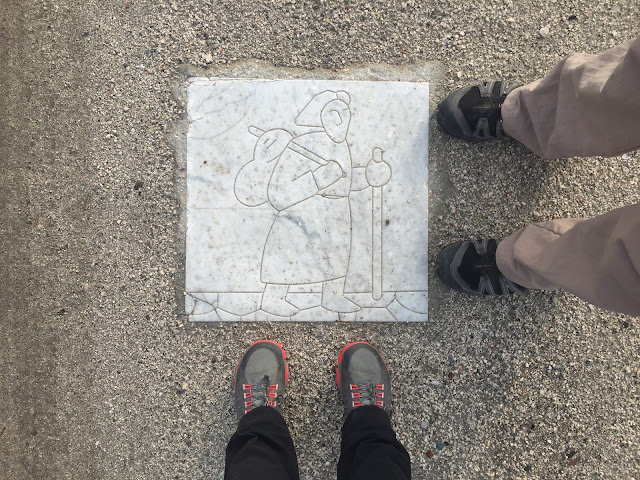 |
| Via Francigena Stone |
 |
| So many signs!! |
 |
| Chad was tired of me taking pictures by this point... |
 |
| Orio Litta |
The pilgrim accommodation in Orio Litta was amazing as well. It was a refurbished medieval building that had lots of room and beds for pilgrims although it was only us and one Chinese man staying that night. Chad and I walked to a bar and played Italian Monopoly while he enjoyed one (or three) beers and I enjoyed a hot chocolate! I liked ordering hot chocolates in Italy because most of the time they would be super thick and chocolatey!! My beverage of choice most of the time though was a latte macchiato! This was warm, frothy and filling! The best thing when you're on a budget!
 |
| I would like to just make a note here that I won... |
This whole section was incredible as the next day we took a ferry across the Po River to Piacenza. This is the historical route; pilgrims throughout the ages would take a ferry to cross the Po because it was too wide for bridges.
It was a pretty cool day already with rain in the forecast a little bit later. We had to call the ferryman the day before and planned our ride for 9:30 that morning.
 |
| The Roman road is here. |
 |
| Mile-marker on the north side of the Po |
 |
| Calm and cool |
 |
| Someone's tired... |
The boat was called the "Sigeric," and supposedly the take-off and landing points that we used were likely the same points that Sigeric would've used more than 1000 years ago. The ferryman was eccentric and loud with crazy gray hair flying about his face and bright red Crocs on his feet. He helped us into the boat, and we took off at top speed down the river. The ride was sooooo cold! Chad and I were very glad that it wasn't raining otherwise we would've froze!

It only took us ten minutes or so and then we were on the other side, and the ferryman was showing us another mile-marker with stones used in it that were found in the area. There was a footprint that supposedly was about 200 years old (though I don't know how he knew that) and a little marking of a fish that he told us was around 800 years old!
 |
| Fish is on the brick to the left, footprint in the center |
Then he brought us to his adorable brick house and brought out his special pilgrim registry. Every pilgrim he shuttles over signs his book and gets a stamp from him. I was pilgrim number 1111 and Chad was 1112. Looking through the book was amazing. Only about 50% of the pilgrims he shuttled were foreigners; the rest were Italian. Of the foreigners, Australians were the biggest group.
 |
| The ferryman's home |
He also had documented starting and ending points for pilgrims. Only 272 people had started in Canterbury by foot and 55 by bike in all the years that he had ferried people across the Po! He told us that these were numbers from last year and since then he thinks another 30 have walked from Canterbury this year which was a lot more than average but was also to be expected because of the Jubilee year.
 |
| The pilgrim registry |
 |
| Our signatures |
 |
| I noticed that the stamps were slowly getting bigger and more elaborate the closer to Rome I got--upper right-hand corner is the ferry stamp in the shape of a Roman mile marker, with Sigeric on a boat in the Po river, another mile marker, the keys of St Peter, and the ferryman's house... |
Leaving the ferryman, Chad and I continued on our way to Piacenza. The clouds were threatening rain, and we quickened our step hoping to get to town before the worst of it!
We stopped for lunch a few kilometers out of town at this delightful little medieval-styled restaurant. We had been getting some sprinkles of rain, and the temperature was quite cool, so we were happy to be inside by the fire!
 |
| This little guy was happy to be inside by the fire too! |
 |
| Ready for the rain! |
We finally made it to Piacenza and stayed the first night in free parish accommodation with a bug infestation! It was soooo dirty and gross, but at least it was free!
 |
Chad was a fan of the little tiny Italian doors
|
Piacenza was one of the most importat European centers in the Middle Ages. It was situated on the ancient Roman road to Northern Europe as well as on the large Po River. This created a commercial and economic power that cultivated wealth and grand building projects in the city. Many gorgeous Romanesque and Gothic churches and public buildings were situated along the Roman road that led directly through the center of the city.
That night we went out to dinner at the most fantastic place! It was a butcher's shop that served dinner to a loud, local and mostly masculine crowd. The owner is called the "Butcher," and he served us a platter of pork rinds and thinly sliced pancetta for starters. Then about a pound and a half of beef tartar followed by the juiciest and most decadent T-bone steak I have ever tasted! It was a fantastic experience, and Chad and I got to talk with and rub shoulders with many locals who were curious about our journey and our views on the elections.
 |
| The Butcher behind the counter in his element |
 |
| Pork rind and beef tartar |
 |
| A rowdy and rambunctious local crowd! |
We explored Piacenza a little bit, but we were soon to find (to my extreme disappointment and Chad's apathy) that none of the churches were ever open for us to enter! I'm sure they had some opening hours but we stopped by all of them at least twice, and we were only able to enter the cathedral!
In the center of the city is the grand Piazza Cavalli-- so named because of the two equestrian statues gracing its corners. Towering over the piazza is the Palazzo Gotico. This building is gorgeous! It was built in 1281 using Verona pink marble and red brick. It is considered an "outstanding example of medieval public architecture" and is still used for public events and houses the tourist center within its sturdy walls.
 |
| Palazzo Gotico |
On the side of the Piazza Cavalli is another smaller piazza. This is the Piazzetta di San Francesco and is named after the Gothic style church of San Francesco that stands at its head. This was an important pilgrim stop during the Middle Ages and is supposed to have a cycle of beautiful frescoes inside.
 |
| Chiesa di San Francesco |
We had more luck with the Duomo in Piacenza! This is an example of the Romanesque style from the region of Emilia and was built between 1122 and 1341.
 |
| Duomo |
I certainly enjoyed the sculpture in front of the Duomo. Man bending under the unreasonable combined weight of bigotry and righteousness...
The inside was tall and grand, and the presence of a small mass singing in the south transept lent the visit an ethereal quality.
I very much enjoyed spotting each of the bas-reliefs portraying each Medieval guild! These are call paratici, and were dedicated to each guild that donated money and resources to the building of the Duomo.
 |
| Blacksmith's guild? |
 |
| Weaver's guild |
 |
| Dyer's guild? |
We briefly passed by the gorgeous Basilica di San Antonio which was first built in the 4th century, though the building now dates from the 11th century. Unfortunately this, too, was closed and we quickly passed by.
 |
| Basilica di San'Antonio |
Our last stop was the Farnese Palace, once a residence for the Visconti and Farnese families, now home to the Civic museums of Piacenza. This expansive ducal palace was never finished though it has a rich history of occupation, including Margaret of Austria, Charles of Bourbon and Napoleon I.
 |
| Original plan for the palace, the amphitheater was never finished |
While the museums were full of historical artifacts including armor, sculpture, and ceramics, a few things stood out to me. The fresco gallery was gorgeous. It was filled with late Medieval frescoes all painted initially in the San Lorenzo Church (which has since been deconsecrated and dismantled). Most of the frescoes show the life and death of St Catherine of Alexandria.
 |
| Would you look at this mess?! |
When artists painted fresco, they would traditionally start with a cartoon outline for their planned composition. This "cartoon" was usually drawn in a red-brownish colored pigment called Sinopia- named after the town in Turkey it was harvested from. There were several such cartoons which displayed the detail in designing a large composition. These "rough drafts" were incredible!
Leaving the fresco room I excitedly made my way to the Farnese Gallery's most famous piece, Madonna adoring the Child with Little St. John by Sandro Botticelli. This rotunda oil painting had its own room so a viewer could sit and stare at it with no distractions!
The Farnese Gallery also hosted an extensive carriage museum! They had over a hundred carriages from several centuries. They also had a room with baby carriages and buggies which I found quite interesting. I had no idea what a sulky or phaeton was before visiting here (to be honest though I'm still not certain what those are...)
 |
| A baby carriage |
My favorite was this sculpted and brightly painted wagon. It reminded me of tinkers and gypsies!
 |
| Roman gladiators! |
Our last stop was the archeological section of the museum which hosts one of the most famous Etruscan artifacts ever found. The Etruscan Liver! This artifact was found in 1877 by a farmer plowing his fields a few kilometers from Piacenza. After its discovery, it became a crucial resource in understanding the Etruscan religion. The Liver of Piacenza, shaped like a sheep's liver, is inscribed with names of deities and was probably used for astronomical observation. The Etruscans lived in Italy from roughly the 8th century to the 3rd century BC making them contemporaries of the ancient Greeks and precursors to the Roman Empire!
 |
| The Liver of Piacenza |
Thus concludes our visit to Piacenza! Chad and I are planning to visit a few cities in the north of Italy for the next week before we continue southwards over the Apennine mountain range and into Tuscany!
Until next time!



































































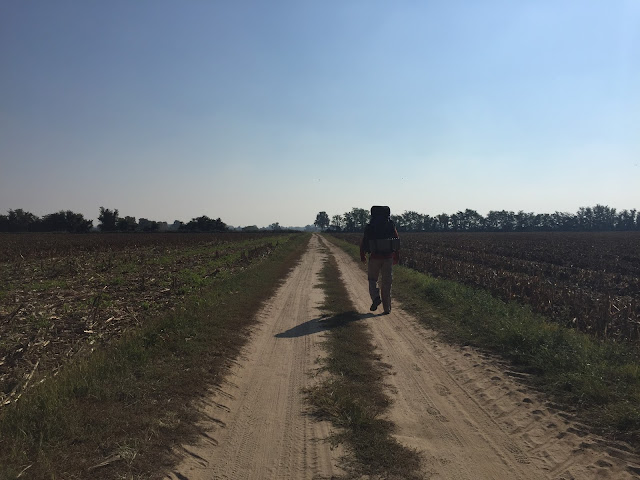


























































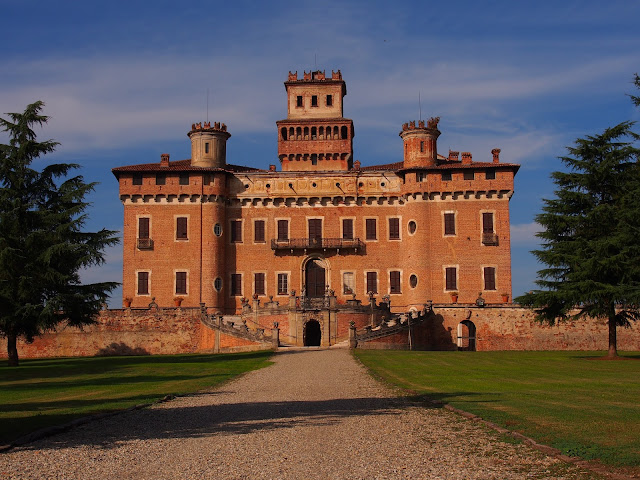


















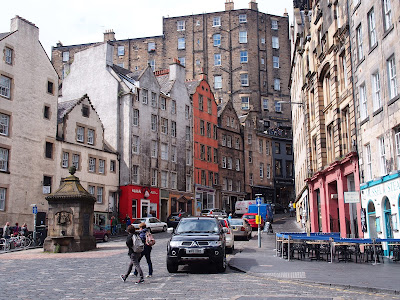
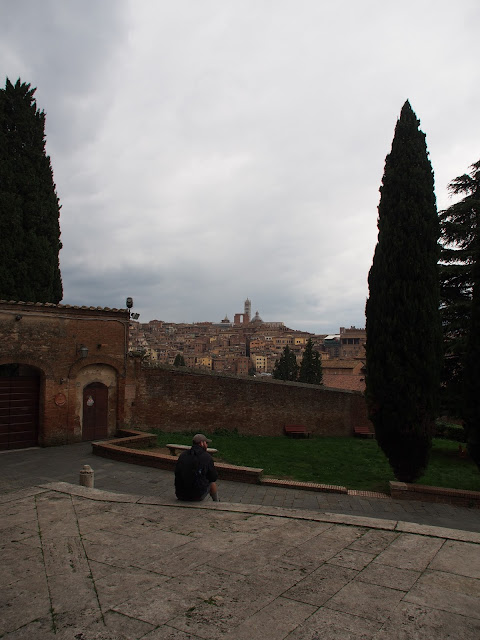

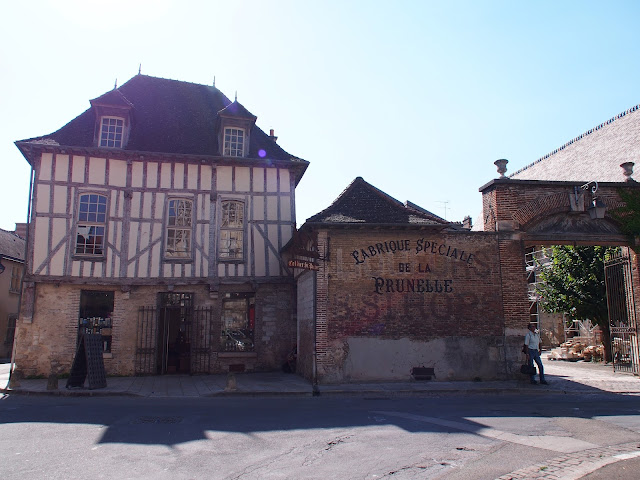




Comments
Post a Comment